Famous Nineteenth Century American Authors
|
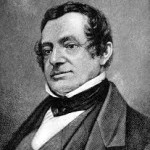 |
Washington Irving
(1783-1859)
|
Named after revolutionary hero George Washington, Washington Irving is remembered for his short stories, biographies and histories. He is best known for two wonderful short stories, Rip Van Winkle and The Legend of Sleepy Hollow, fantasies set in the beautiful Hudson River Valley of New York. Later in life Irving appointed by the US Government as Minister to Spain. Irving was one of the first great American authors to advocate writing as a profession.
The Legend of Sleepy Hollow and Other Stories
|
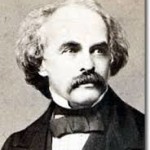 |
Nathaniel Hawthorne
(1804-1864)
|
Nathaniel Hawthorne is most well known as a romantic novelist whose themes portray the rigid values of Puritan New England. His most famous works, the Scarlet Letter and the House of Seven Gables, are stories which depict the strong moral consequences of the choices we make. His stories are steeped in allegory and symbolism. Born and raised in Salem, MA, Hawthorne’s grandfather presided as a judge during the Salem Witch Trials. At a younger age, Hawthorne could be identified with a circle of writers called Transcendentalists, who believed that people and nature were inherently good. As he grew older, he would drift away from these ideals in his thinking and in his writing.
The House of the Seven Gables
The Scarlet Letter
|
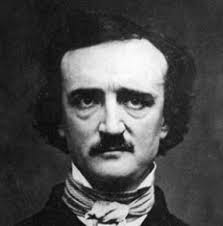 |
Edgar Allen Poe
(1809-1849)
|
Edgar Allen Poe wrote with a passion for mystery and macabre. At times a writer, poet, editor and critic, Poe is best known for his eerie, intense short stories and fervid poetry. During a time that writers lived on modest incomes, his most famous work, The Raven, brought him wide acclaim but small financial reward. His moody, haunting tales mirror a life of personal struggle and misfortune. Known as the father of detective fiction, the Mystery Writers of America present the Edgar Award annually in his honor. And for a good Halloween reading, it doesn’t get much better than “The Tell-Tale Heart”!
Edgar Allan Poe, Ultimate Collection
|
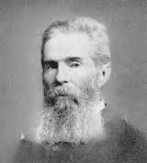 |
Herman Melville
(1819-1891)
|
After spending his early adult years as a sailor, Herman Melville used life at sea to create the setting for many of his works. His novels provide clear depiction of man’s strengths and weaknesses. They are also rich in allegory and religious symbolism. His literary masterpiece, Moby Dick, did not gain acclaim until years after his death. It is now considered one of our greatest American novels.
Moby Dick
|
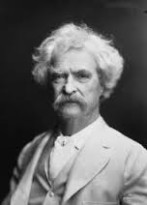 |
Mark Twain
(1835-1910)
|
With a humorous, irreverent writing style, Mark Twain’s novels and short stories made him perhaps the most popular American of his day. His masterpiece, The Adventures of Huckleberry Finn, is considered by many to be the most important novel in history because the story is beautifully written using the unfiltered words and dialog of that time. Twain’s common sense brand of wit and social commentary makes him arguably the most often quoted author of all time.
The Adventures of Tom Sawyer & Huckleberry Finn
|
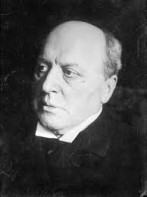 |
Henry James
(1843-1916)
|
If you prefer to read greater detail of a person’s thoughts than his or her actions, Henry James works are for you. His novels tended to go deep into the minds of his characters. The clash of Old World corruption and New World innocence is a common James theme. His great works include: Daisy Miller, The Portrait of a Lady and The Ambassadors. James became a British citizen one year before his death.
The Portrait of a Lady
|
Famous Twentieth Century American Authors
|
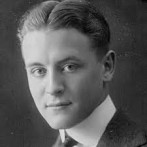 |
F. Scott Fitzgerald
(1896-1940)
|
Scott Fitzgerald writings accurately embody the excesses of a period of American history known as the Roaring 20’s. It was a time of festivity and intemperance which preceded the Great Depression. His signature novel, The Great Gatsby, captures the essence of this prosperous time also known as the Jazz Age. The failed pursuit of the American dream is a common theme in the author’s works. Fitzgerald was named for Francis Scott Key, writer of our great American anthem, Star-Spangled Banner.
The Great Gatsby
|
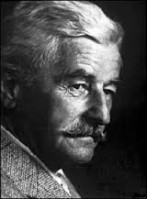 |
William Faulkner
(1897-1962)
|
A man from the deep south of Mississippi, Faulkner is well known for his novels with a rural, southern point of view. His complex, detailed works are anything but light reading. During his time, Faulkner was also a writer of short stories, poetry, essays, plays and screenplays. A Nobel Prize winner in 1949, his novel The Sound and the Fury is perhaps his most highly acclaimed.
The Sound and the Fury
|
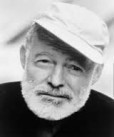 |
Ernest Hemmingway
(1899-1961)
|
Considered one of our greatest American novelists, Hemmingway was an author, journalist, soldier and an overall adventurer. His novels are known for their great passion in depiction of the human experience. His wartime story A Farewell to Arms is based on his own experience as a soldier in Italy during World War I. Other famous Hemingway novels include: The Old Man of the Sea, For Whom the Bell Tolls and The Sun also Rises. An adventurer with a zest for life, deteriorating health forced him to take his own at the age of 61. His former residence in Key West, Florida receives thousands of visits yearly. It is also home to over 40 polydactyl (six-toed) cats.
The Old Man and the Sea: The Hemingway Library Edition
|
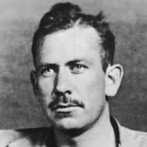 |
John Steinbeck
(1902-1968)
|
John Steinbeck wrote realistic novels, often about the life struggles of the common people and migrant workers. His novels are about men and women from the west, often taking place in his home region of central California. The themes of injustice and lack of opportunity run through most of his works. Great films have been created from many of his stories including: Grapes of Wrath, Of Mice and Men and Tortilla Flats.
Of Mice and Men
The Grapes of Wrath
|
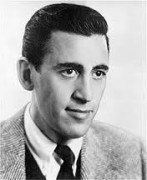 |
J. D. Salinger
(1919-2010)
|
JD Salinger wrote short stories and novels which delved deeply into the minds of his characters, who were often adolescents. He once wrote, “I almost always write about young people.” His great work, The Catcher in the Rye, explores the themes of alienation and the loss of innocence of its youthful characters. It remains one of the most widely read novels for school age teenagers. A very private man, Salinger lived more than half of his life at a secluded location in New Hampshire.
The Catcher in the Rye
|
| |
|
|
| |
|
|
| |